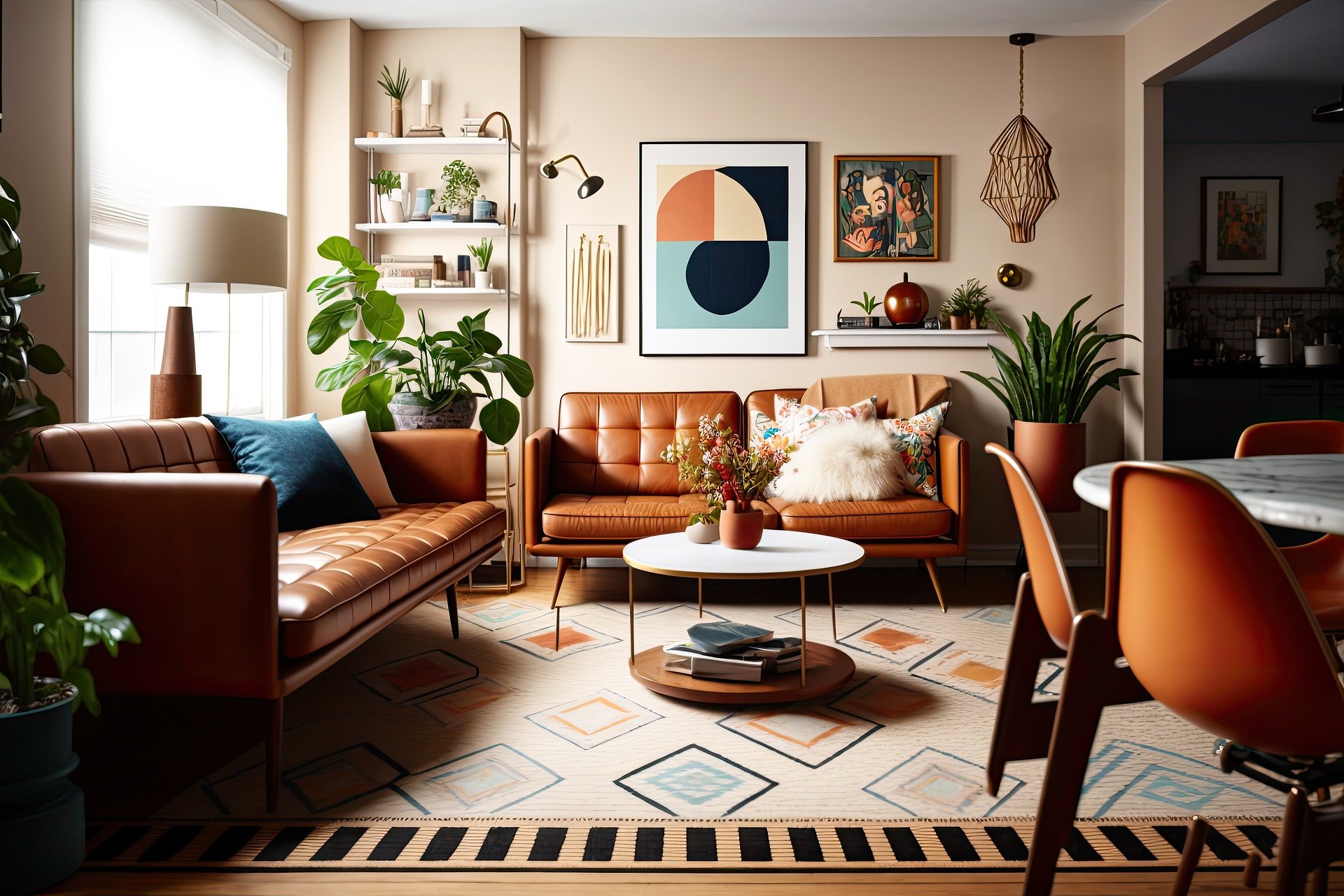Transforming Your Living Space: The Art of Home Decor
Home decor is more than just arranging furniture and hanging pictures on walls. It's an art form that allows you to express your personality, create a comfortable environment, and enhance the overall aesthetic of your living space. Whether you're moving into a new home or looking to refresh your current one, understanding the principles of interior design and decor can help you create a space that's both functional and visually appealing.

When choosing colors, consider the 60-30-10 rule: 60% of the room should be a dominant color (usually for walls), 30% should be a secondary color (often for furniture), and 10% should be an accent color (for accessories). This balance helps create a cohesive look without overwhelming the senses. Don’t forget to take into account natural light and the size of the room, as these factors can significantly impact how colors appear.
What are some essential furniture pieces for a well-designed living room?
The living room is often the heart of the home, where family and friends gather to relax and socialize. When furnishing this space, start with the essentials:
-
A comfortable sofa or sectional
-
Armchairs or accent chairs
-
A coffee table
-
Side tables
-
A media console or TV stand
When selecting these pieces, consider both style and functionality. A sectional sofa might be ideal for larger families or those who love to entertain, while a sleek loveseat could work better in a smaller space. Look for furniture that complements your chosen color scheme and overall design aesthetic.
How can I incorporate different textures and materials in my decor?
Incorporating various textures and materials adds depth and interest to your home decor. Mixing different elements can create a rich, layered look that engages the senses. Here are some ways to introduce texture:
-
Textiles: Use throw pillows, blankets, and rugs in different fabrics like velvet, linen, or wool.
-
Natural elements: Incorporate wood, stone, or plants to bring organic textures into your space.
-
Metallics: Add shine and contrast with metallic accents in gold, silver, or copper.
-
Wall treatments: Consider textured wallpaper, wainscoting, or exposed brick for visual interest.
Remember to balance different textures to avoid overwhelming the space. A good rule of thumb is to include at least three different textures in a room for a well-rounded design.
What are some popular home decor styles and how can I achieve them?
There are numerous home decor styles to choose from, each with its own unique characteristics. Here are a few popular styles and tips on how to achieve them:
-
Scandinavian: Focus on minimalism, functionality, and light colors. Use natural materials like wood and incorporate plenty of white space.
-
Bohemian: Embrace eclectic patterns, rich colors, and global-inspired accessories. Mix and match textures and incorporate plants for a free-spirited vibe.
-
Mid-century Modern: Look for clean lines, organic shapes, and iconic furniture pieces from the 1950s and 60s. Use a mix of natural and manmade materials.
-
Farmhouse: Combine rustic elements with modern touches. Use neutral colors, natural textures, and vintage-inspired accessories.
-
Contemporary: Focus on simplicity, subtle sophistication, and deliberate use of texture. Stick to a neutral color palette with pops of bold color in accessories.
How can I maximize space and storage in my home decor?
Efficient use of space is essential in any home, regardless of size. Here are some strategies to maximize space and storage:
-
Multi-functional furniture: Choose pieces that serve dual purposes, such as ottomans with hidden storage or expandable dining tables.
-
Vertical storage: Utilize wall space with floating shelves, bookcases, or hanging organizers.
-
Built-in solutions: Consider custom built-ins for a seamless look that maximizes every inch of space.
-
Under-bed storage: Use bed risers or choose a bed with built-in drawers to take advantage of under-bed space.
-
Declutter regularly: Adopt a minimalist approach and regularly purge items you no longer need or use.
By implementing these strategies, you can create a more organized and spacious-feeling home without sacrificing style.
What are some affordable ways to update my home decor?
Refreshing your home decor doesn’t have to break the bank. Here are some budget-friendly ideas to give your space a new look:
-
Paint: A fresh coat of paint can dramatically change the feel of a room.
-
Rearrange furniture: Experiment with different layouts to create a new perspective.
-
Update hardware: Replace cabinet knobs, drawer pulls, or light switch plates for an instant upgrade.
-
Add plants: Introduce greenery to bring life and freshness to your space.
-
DIY art: Create your own artwork or frame interesting fabrics or wallpaper samples.
-
Thrift and upcycle: Visit second-hand stores or flea markets for unique finds you can repurpose.
| Update Method | Estimated Cost Range | Potential Impact |
|---|---|---|
| Paint | $30 - $100 per room | High |
| New Hardware | $20 - $100 | Medium |
| Plants | $10 - $50 per plant | Medium |
| DIY Art | $20 - $50 | Medium to High |
| Thrifted Decor | $5 - $100 | Varies |
Prices, rates, or cost estimates mentioned in this article are based on the latest available information but may change over time. Independent research is advised before making financial decisions.
Home decor is an ongoing process of creativity and self-expression. As you experiment with different styles, colors, and arrangements, you’ll discover what truly makes your house feel like a home. Remember that the most important aspect of home decor is creating a space that reflects your personality and meets your needs. With these tips and ideas, you’re well on your way to transforming your living space into a beautiful and functional oasis.






